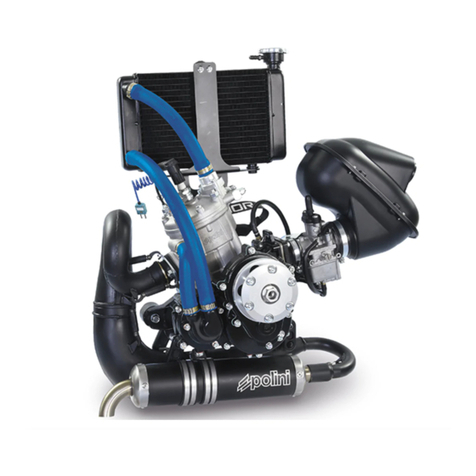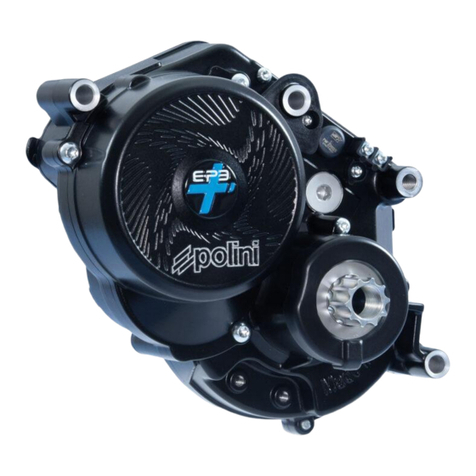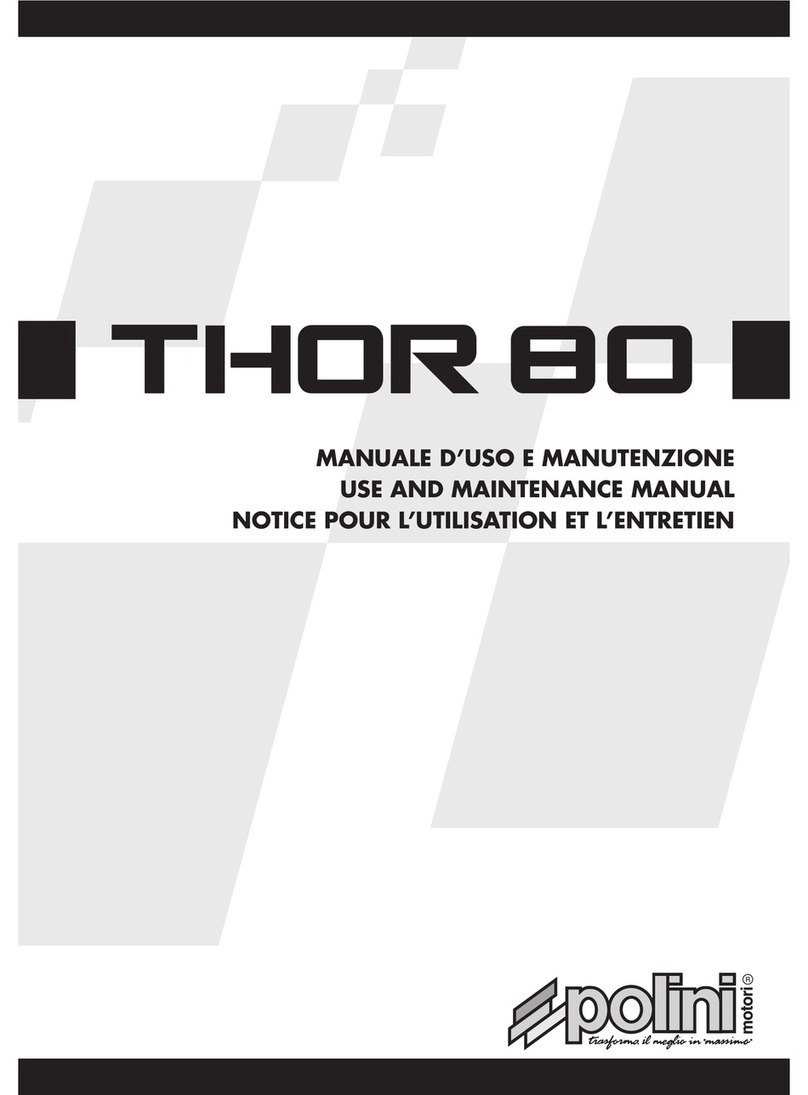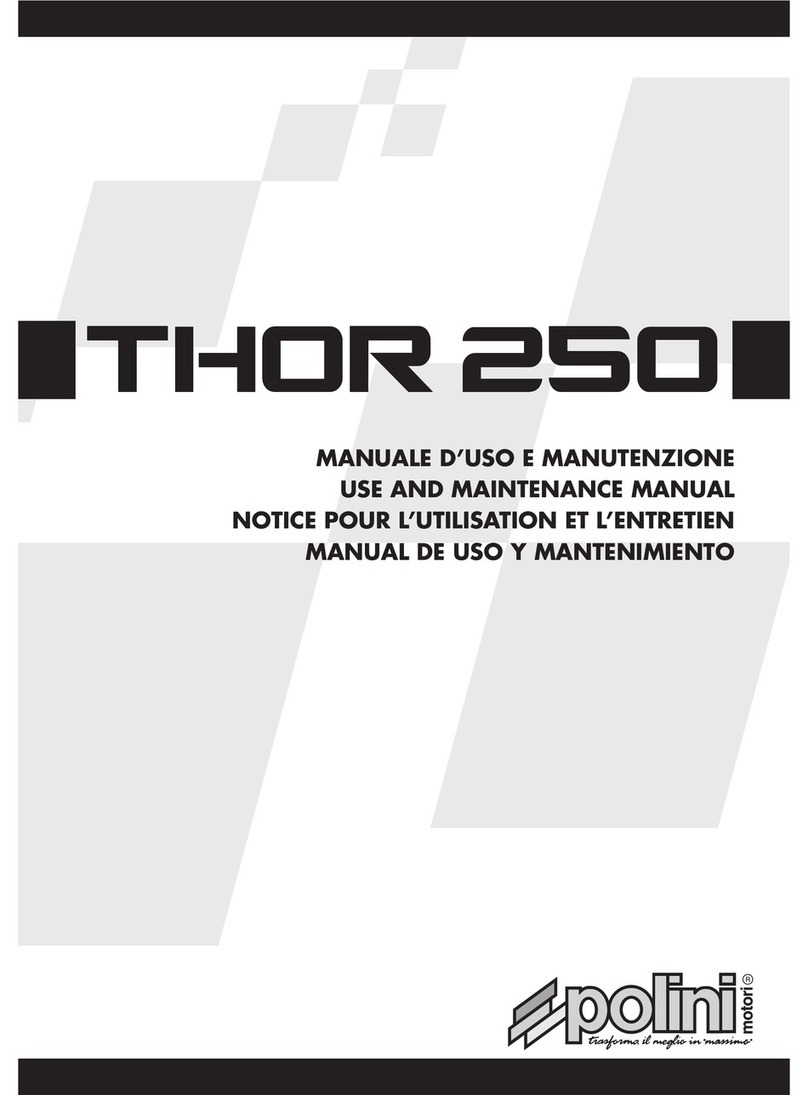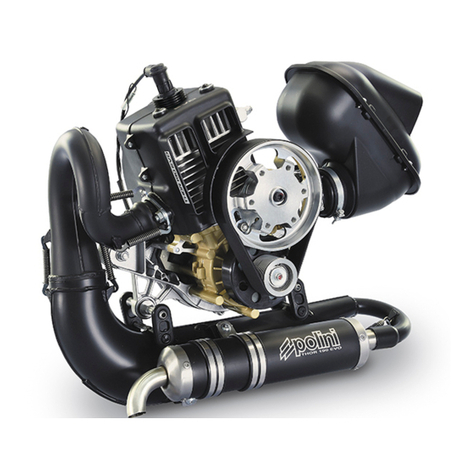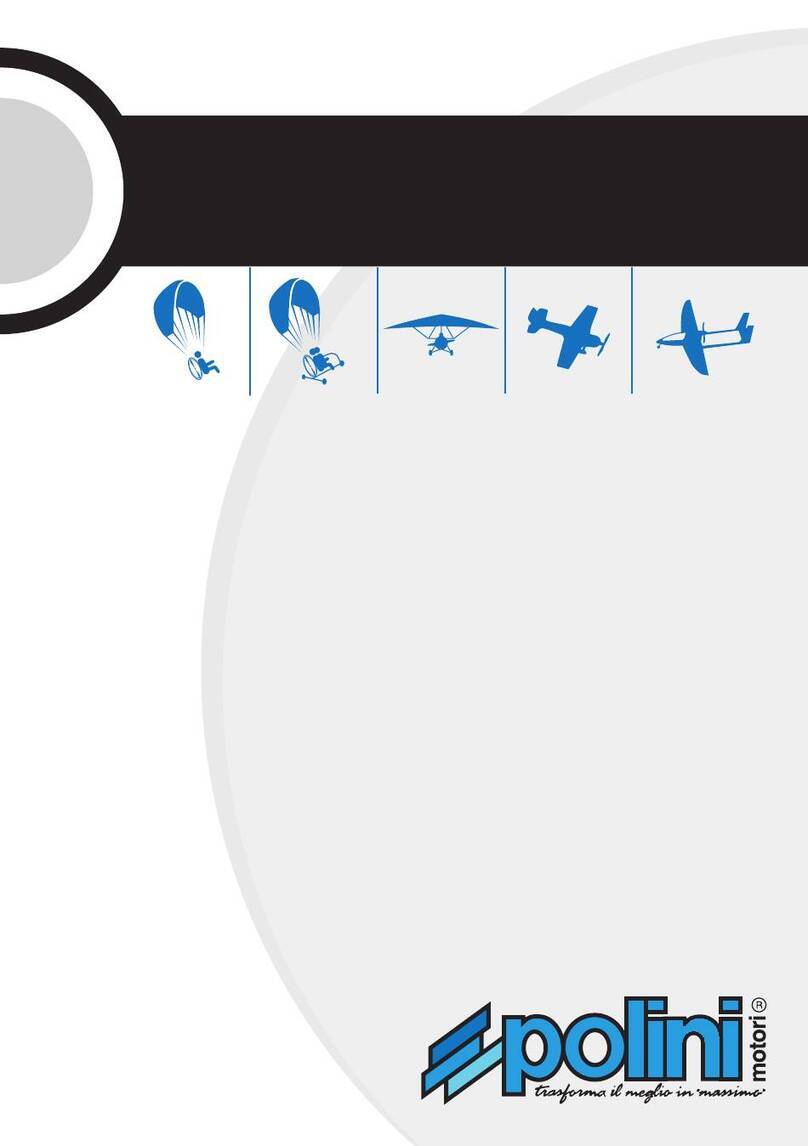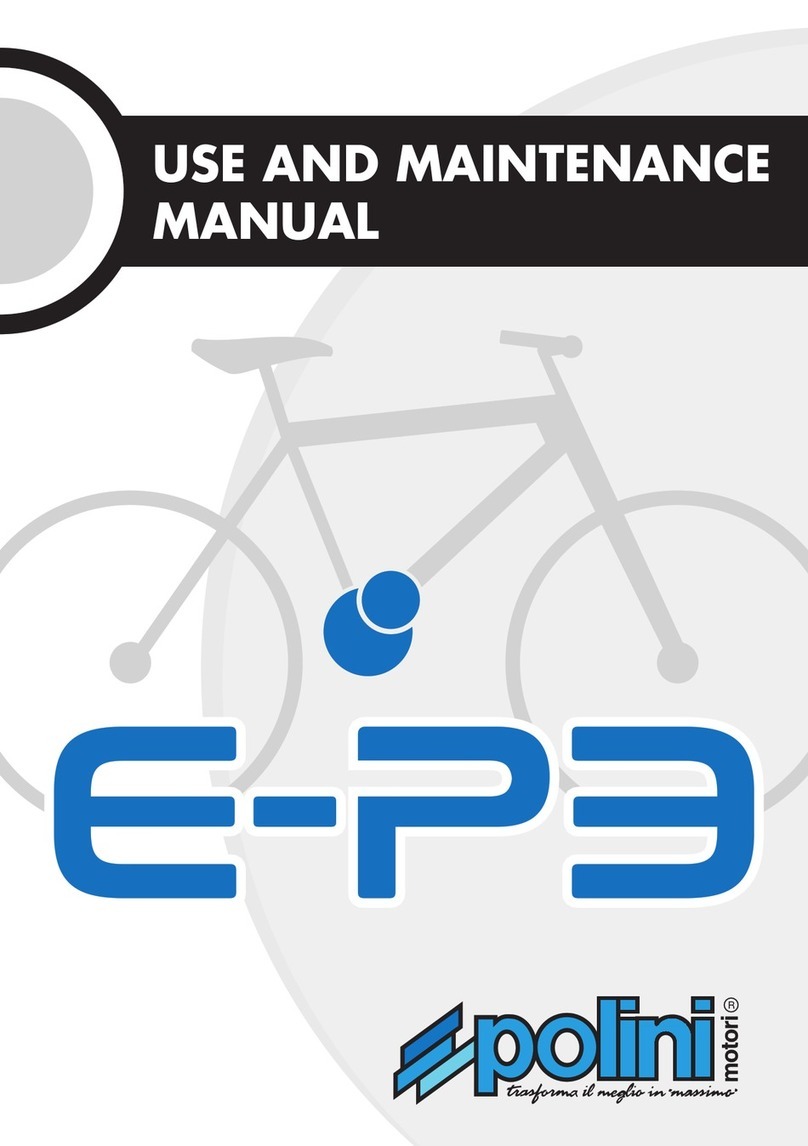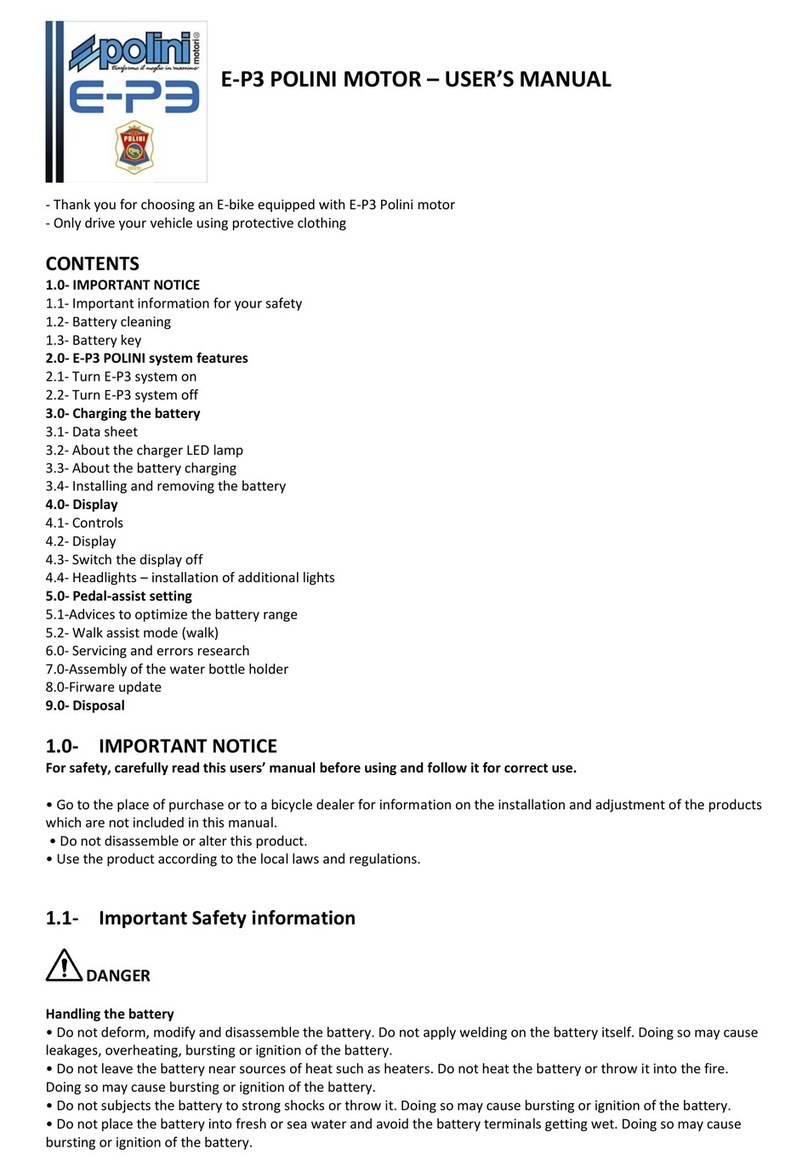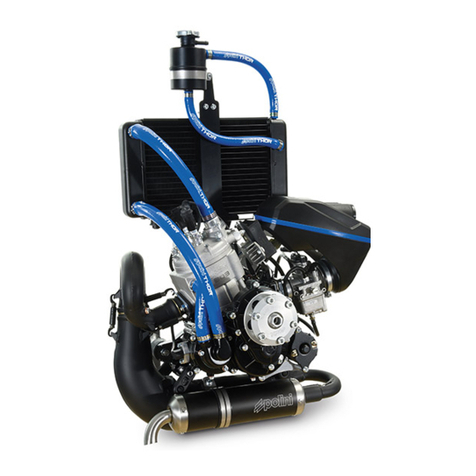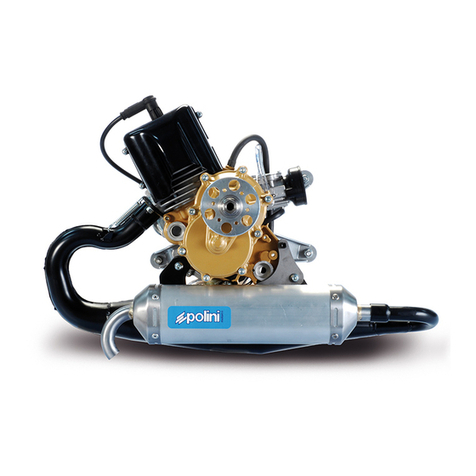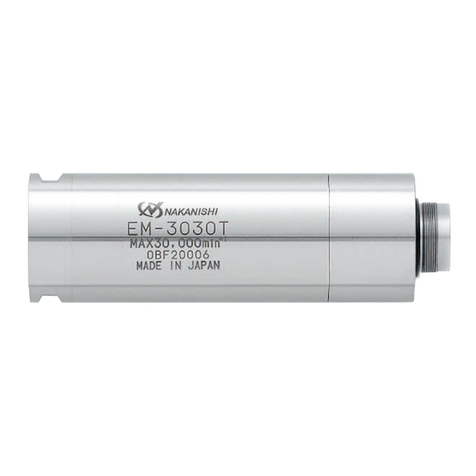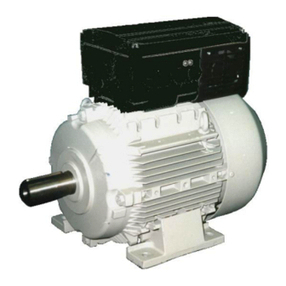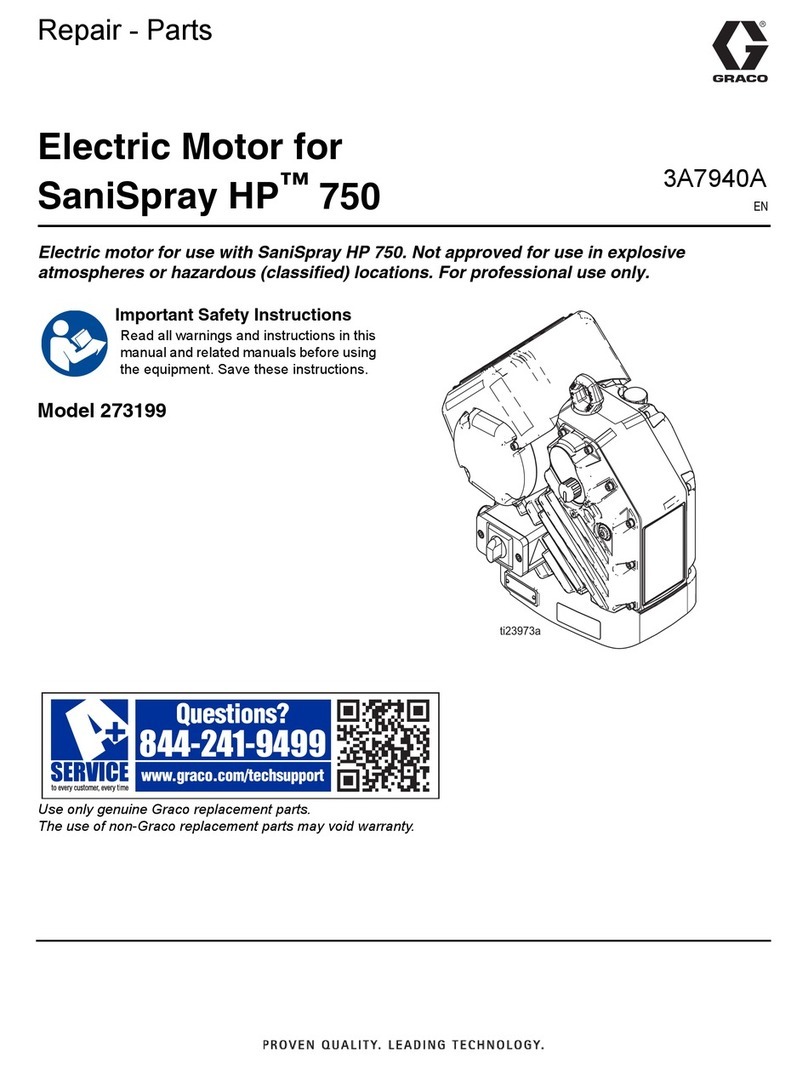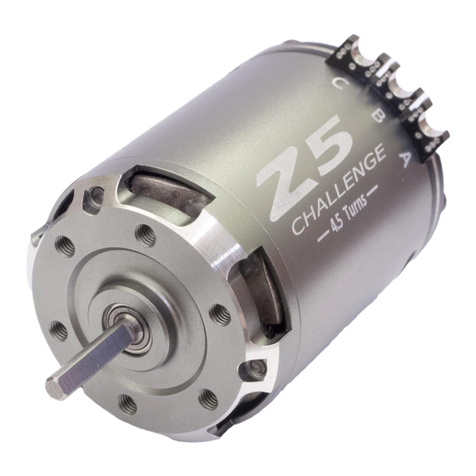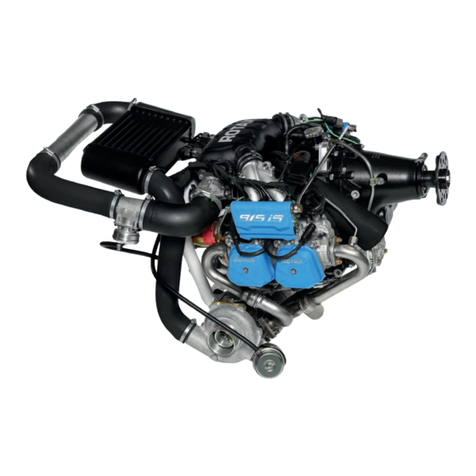
3
ITALIANO
paragrafo 3.1. La versione dotata di frizione è provvista anche di Flash
Starter; quest’ultimo facilita l’avviamento perché è provvisto di una
molla interna che si carica con la trazione della fune e quando rilascia
l’energia accumulata fa partire il motore. Per l’avviamento con il Flash
starter si consiglia di tirare la fune di avviamento con un movimento
fluido non troppo veloce per evitare di danneggiare la molla.
! ATTENZIONE: durante tutte le fasi tenere sempre in mano
l’interruttore di spegnimento e tenersi pronti ad azionarlo in qualsiasi
caso di anomalia. Nel qual caso tenerlo premuto fino a completo
spegnimento del motore. Una volta avviato il motore consigliamo di
fare un test di corretto funzionamento del pulsante di spegnimento.
Dopo il controllo riavviare il motore senza accelerare. A questo punto
lasciar girare al minimo il motore dando delle leggere accelerate fino
a portare il motore in temperatura.
4- RODAGGIO
Per ottimizzare l’assestamento del motore e della trasmissione al
primo funzionamento, preservando così da subito l’affidabilità, è
indispensabile un breve rodaggio. Attenersi pertanto alle seguenti
indicazioni: una volta avviato il motore farlo girare al minimo dando
delle leggere accelerate fino al raggiungimento della normale tem-
peratura di esercizio. Consigliamo 15 minuti di avviamento motore a
medio-bassa erogazione di potenza del motore dando delle accelerate
leggere e di diversa intensità. A questo punto consigliamo di verificare
la corretta taratura del minimo meccanico. Durante i primi voli o
comunque per i primi 20 litri di carburante consigliamo di non tenere
il motore al massimo dei giri per troppo tempo, tenendo presente
che il motore a 2 tempi mal sopporta i regimi di rotazione costanti
anche se a media potenza. Consigliamo dunque di cercare di variare il
regime di rotazione del motore. Dopo il primo atterraggio consigliamo
di controllare la carburazione. Ripetere il ciclo di rodaggio ogni volta
che viene sostituito uno qualsiasi dei seguenti particolari: pistone, fasce
elastiche, cilindro, albero motore o i cuscinetti di banco.
5- SPEGNIMENTO DEL MOTORE
Per spegnere il motore azionare l’apposito pulsante fino a completo
spegnimento. Se il motore è equipaggiato con il comando acceleratore
Polini il tasto di spegnimento è di colore rosso ed è situato nella
zona superiore, in caso contrario fare riferimento alle istruzioni del
costruttore del telaio/acceleratore per l’individuazione del pulsante di
spegnimento
6- CARBURAZIONE
La regolazione della carburazione deve essere effettuata da personale
specializzato. È possibile fare un’analisi veloce della carburazione con-
trollando la colorazione della candela, per fare ciò spegnere il motore
subito dopo averlo fatto funzionare per alcuni minuti sotto carico.
Togliere la candela svitandola con apposita chiave e verificare il colore
della porcellana, che deve essere di colore nocciola o tendente allo scu-
ro. Un colore chiaro dell’elettrodo candela è sintomo di carburazione
magra. L’utilizzo del motore in tali condizioni può facilmente portare
alla rottura del motore stesso. Non utilizzare il motore in queste
condizioni e rivolgersi ad un centro autorizzato per la regolazione.
NOTA: I carburatori Walbro sono dotati di un sigillo di plastica che
limita la regolazione della vite del massimo (H) di ¼ di giro. Tale rego-
lazione è sufficiente a tarare i motori nelle varie condizioni di utilizzo.
La rimozione di questo sigillo comporta il decadimento della garanzia.
7- PULIZIA
Effettuare la pulizia del motore solo a motore spento e freddo per
evitare pericoli di scottature. Pulire il motore utilizzando un panno
morbido imbevuto di prodotti neutri e non aggressivi.
!AVVERTENZA: l’utilizzo di solventi può danneggiare il motore,
la vernice e le parti in gomma.
8- TRASPORTO
!ATTENZIONE: Effettuare il trasporto solo quando il motore
è freddo. Riferirsi alle indicazioni del costruttore del telaio per un
corretto trasporto e sulle modalità di utilizzo del serbatoio carburante
durante il trasporto. Porre molta attenzione al carburante: una
fuoriuscita dello stesso può causare un incendio. Il carburatore Walbro
è sigillato e una sua eventuale inclinazione non comporta fuoriuscite
di carburante. È possibile pertanto inclinare il motore in ogni posizione
senza avere fuoriuscite di carburante dal carburatore.
9- MANUTENZIONE ORDINARIA
!ATTENZIONE: LE OPERAZIONI DI MANUTENZIONE DEVONO
ESSERE EFFETTUATE ESCLUSIVAMENTE DA PERSONALE COMPETENTE.
QUALORA LE OPERAZIONI INDICATE NEI SUCCESSIVI PUNTI DEL
MANUALE NON FOSSERO CHIARE ALL’UTENTE, SI CONSIGLIA DI
CONSULTARE PERSONALE SPECIALIZZATO PRESSO I RIVENDITORI O
CONCESSIONARI POLINI MOTORI. ATTENERSI SCRUPOLOSAMENTE A
QUANTO INDICATO NEI SUCCESSIVI PUNTI DEL MANUALE.
Le manutenzioni e gli interventi necessari per una messa a punto otti-
male del veicolo sono da intendersi come controlli quotidiani di prima
messa in moto del veicolo. Manutenzioni e regolazioni quotidiane
sono facilmente eseguibili se fatte con le istruzioni dettate da questo
manuale d’assistenza. Le manutenzioni straordinarie sono dirottate
presso i concessionari POLINI MOTORI che sostituiranno i particolari
deteriorati esclusivamente con ricambi originali. La frequenza della
manutenzione ed il tipo d’intervento sono dettati dal paragrafo 12.
9.1- RIMOZIONE E PULIZIA DEL FILTRO ARIA
Un filtro aria sporco può compromettere le prestazioni del veicolo.
Provvedere periodicamente alla sua pulizia o eventuale sostituzione.
Smontare il filtro allentando la fascetta, svitare le 4 viti utilizzando un
cacciavite a croce, rimuovere il coperchio del filtro ed il filtro stesso.
Lavare il materiale filtrante in acqua calda con sapone neutro.
Far asciugare accuratamente e successivamente umidificarlo con
idoneo olio per filtri. Pulire con un panno l’interno della scatola filtri
assicurandosi che non vi siano corpi estranei. A questo punto rimontare
il tutto facendo attenzione a riposizionare correttamente le 4 barrette
che mantengono il filtro in posizione e riavvitare le 4 viti. Un filtro può
essere lavato 2-3 volte dopodiché va sostituito con uno nuovo.
!AVVERTENZA: Nel caso il filtro presentasse una forte concen-
trazione di polvere o impurità sostituirlo con uno nuovo.

